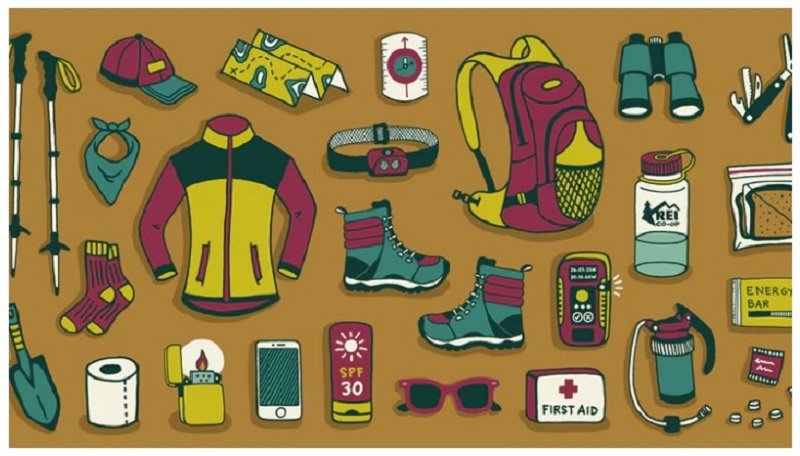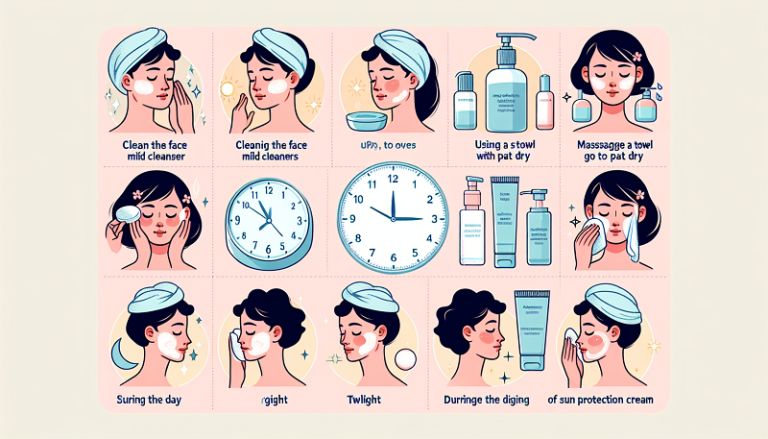Conquer The Trails: Must-Have Hiking Gear Essentials

Hiking Gear Essentials
Understanding Durability and Warranty
When you’re ready to spend your hard-earned money on hiking gear, it’s worth checking out the durability and warranty first. You want stuff that can hold its ground against Mother Nature while lasting longer than that one bad haircut you regret. Lots of big-name brands are so convinced their gear is built to last that they sweeten the deal with warranties. Like Darn Tough with their socks—some say they’re tougher than a two-dollar steak and come with a lifetime guarantee to boot (The Trek).
Check out this handy table for the lowdown on warranties from a few outdoor gear giants:
| Brand | Product | Warranty Type |
|---|---|---|
| Darn Tough | Socks | Lifetime Warranty |
| Patagonia | Clothing | Ironclad Guarantee (Repair policy) |
| Osprey | Backpacks | All Mighty Guarantee (Lifetime Repair) |
| Arc’teryx | Outerwear | Limited Lifetime Warranty |
Need to know more about hiking boots reviews? Peep those warranties and you’ve got yourself a key player in deciding which boots are meant for your journey.
Maintenance Tips for Longevity
Keeping your hiking gear in tip-top shape isn’t rocket science, but it does need a little love. Following what the manufacturers say, regular check-ups, a good scrub here and there, and tackling any battle scars pronto can keep your gear from quitting mid-hike.
Here’s how to baby your gear:
- Storage: Stash your stuff in a cool, dry spot far from the sun’s rays to keep its waterproof charm and materials intact (CampCo Shop).
- Repairs: Got a tiny puncture? Seal it up with Seam Grip. Scuffed shoes? Hey, give Shoe Goo a whirl and keep going without missing a beat (The Trek).
- Inspections: Make a habit of eyeballing straps, buckles, cords, and other bits for any signs of “nearing retirement.” Swap those out before they decide to throw in the towel (CampCo Shop).
For more tips on keeping your gear and yourself in check, give our hiking safety tips a read—it’s got your back.
By wrapping your head around what it takes to care for your hiking gear, you can prep for landscapes that leave you more out of breath than your workout. Happy trails!
Waterproofing and Cleaning Gear
Taking care of your hiking gear is like taking care of a good pair of shoes or a beloved car—it needs some love to keep it going strong. Here, we’re gonna chat about how to keep your gear ‘rain dance ready’—in other words, how to clean and waterproof so it doesn’t let you down when Mother Nature throws a tantrum.
Keeping It Dry
Your outdoor buddies like rain jackets and backpacks want to stay dry too! They’ve got a few tricks up their sleeves to help keep rain off your back:
- Sprays and Sealants: Think of products like Nikwax or Scotchgard as their raincoat. Just spritz ’em onto jackets or bags, and you’ve got a solid “rain be gone” shield. Super easy—just clean and let them dry first. The Trek has some more fun facts if you wanna nerd out about it.
- Seam Sealers: Got a tent with a leaky corner? Seam Grip can patch those up like a dream, keeping pesky drizzles outside where they belong.
- Wax Treatments: Leather boots aren’t just for looking rugged; they need their own kind of TLC. Wax products like Sno-Seal can make them tougher than an old cowboy without losing any charm.
| Treatment Type | Best Use For | Brands To Try |
|---|---|---|
| Spray & Sealant | Rain Jackets, Bags | Nikwax, Scotchgard |
| Seam Sealer | Tents, Bags | Seam Grip |
| Wax Treatment | Leather Boots | Sno-Seal |
To keep everything in ship-shape, reapply those treatments after a few hikes or a good scrub-down. And listen to what the bottle tells you!
Wash It Right
Washing your gear, much like washing your dog, needs some special attention to keep everything working right. Here’s how not to mess it up:
- Rain Jackets and Waterproof Clothes:
- Use cleaners like Nikwax Tech Wash. No softeners—unless you like rain-soaked socks.
- After a wash, another waterproofing treatment might just be the cherry on top.
- Down Jackets and Sleeping Bags:
- Grab a soap that loves down feathers, like Grangers Down Wash.
- Wash them in front-load machines so they don’t get tangled like in a spin-cycle tango.
- Bouncing a couple tennis balls when drying helps keep them fluffy and fancy.
- Backpacks and Tents:
- Just a dab of mild soap and lukewarm water will do—no bubbles party needed.
- Scrub those zippers like you mean it to remove all that mud and campfire ashes.
- Let them air out completely, cause nobody likes the funk of mildew.
| Gear Type | How to Clean | Handy Helpers |
|---|---|---|
| Rain Jackets | Use Tech Wash, Skip Softeners | Nikwax Tech Wash |
| Down Goods | Down Cleaners, Front-Loading Wash | Grangers Down Wash |
| Bags & Tents | Mild Soap, Extra Zipper Care | N/A |
Once everything’s looking fresh, make sure it’s dry as the desert before storing. Keep it in a cool spot away from the sun’s eager rays. For more wisdom on keeping things safe and sound on the trail, check out our other reads on hiking safety and solo adventures.
Footwear for Hiking
When gearing up for a hiking adventure, what you put on your feet can make or break the trip. The right pair of shoes can keep you nimble and comfy while you’re out exploring the great outdoors.
Importance of Proper Footwear
Here’s why you shouldn’t just grab any old sneakers for a hike:
- Comfort: Snazzy shoes keep blisters at bay. You want to enjoy those views, not wince with every step.
- Traction: Slippery slopes? Not a problem with the right grip underfoot.
- Support: Your ankles and arches deserve a break from the battering, so pick shoes with good support.
- Protection: Keeps your toes safe from pointy rocks and surprise stubs (American Hiking Society).
Take a gander at this table to see what shoes suit which trails:
| Trail Type | Recommended Footwear |
|---|---|
| Rocky, Rugged Trails | Hiking Boots |
| Smooth, Gentle Trails | Hiking Shoes |
| Easy, Smooth Trails | Sandals/Trail Runners |
Selecting the Right Shoes
Choosing the right hiking footwear isn’t rocket science, but there’s a bit of detective work involved. Here’s what to look for:
- Terrain: Rock-hopping? Get boots. Strolling a park path? Hiking shoes or trail runners should do the trick (REI).
- Fit: Don’t skimp on trying them out. Those shoes need to fit like a glove to stop blisters in their tracks.
- Breathability: If it’s hot out, your feet will thank you for some airflow. Breathable shoes are your best friend.
- Waterproofing: Mud puddles and streams call for waterproof kicks. But check they’ve got some airflow too, so you’re not hiking with soggy feet.
- Weight: Heavy shoes on a long hike are like carrying rocks in your backpack. Go light where you can.
If you’re setting off on hiking adventures in national parks, make sure your footwear is in line with the trails you’re about to conquer. For more nuggets of wisdom on staying safe and stylish, check out our advice on hiking safety tips and other hiking gear essentials.
With the right knowledge and footwear, adventurers can tackle trails with more ease and joy.
Essential Hiking Accessories
Getting ready for a hike? Great! Let’s chat about the gear you shouldn’t leave home without. We’ll tackle the ‘must-haves’ for finding your way and keeping yourself fed and hydrated on the trail.
Navigation Tools Importance
Finding your way on the trails isn’t just for the pros—it’s everyone’s business. Sure, technology’s cool, with fancy hiking apps like HiiKER giving offline maps, schedules, and weather tips. But don’t toss away the basics just yet.
Essential Navigation Tools:
- Map and Compass: Your old-school pals. The American Hiking Society says they’re worth having around. Even with GPS or a super-smartphone, a map and compass keep you grounded when signals go AWOL.
- GPS Device: Accurate location tracking and route planning. But remember, this tech can have brain farts too, so always have a backup.
- Smartphone Apps: These bring hiking into the 21st century with free maps and live weather updates. Handy? Very.
Navigation Tools Comparison:
| Tool | Pros | Cons |
|---|---|---|
| Map and Compass | Never dies, no charge needed | Need to know your stuff |
| GPS Device | Spot-on, simple | Needs juice, might quit |
| Smartphone Apps | Handy and packed with goodies | Needs signal, eats power |
For more survival smarts on the trails, hit up our page on hiking safety tips.
Hydration and Nutrition Needs
Keeping your water and food game on strong keeps you beaming with energy and health. Ignore them, and you risk running on empty—or worse.
Hydration Essentials:
- Water: Lugging around a liter of water for each hour you plan to hike is a smart play, say the folks at REI. Bring more if the hike’s gonna be long or the sun’s blazing.
- Hydration Packs: These make sipping as you go easy-peasy. Built to hold up to 3 liters, they make carrying water a bit less of a chore.
Nutrition Essentials:
- Trail Mix and Energy Bars: These pocket-friendly snacks mix carbs, proteins, and fats to keep you plowing through the paths (REI).
- Fruits and Nuts: Tasty and wholesome, these treats are always a yes.
- Electrolyte Tablets: Perfect for getting those lost salts back into your system, especially if you’re planning a sweat-fest.
Hydration and Nutrition Recommendations:
| Need | What to Aim For | Good Stuff |
|---|---|---|
| Hydration | 1 liter an hour per person | Water bottles, hydration packs |
| Nutrition | Snacks long on protein and energy | Trail mix, energy bars, fruits |
Picking the right gear adds smiles to your miles, keeping you steady, hydrated, and fueled up. For solo trekkers or those venturing into hiking in national parks, this advice becomes doubly meaningful.
Outdoor Gear Brands
Hiking takes you on some wild adventures where having trusty gear is as crucial and hangry prevention snacks. Picking equipment from top-notch outdoor brands can elevate your hike from the get-go. Check out the focus here on eco-friendly actions and affordable gear options to make the best outta your outdoor adventures.
Sustainability in Outdoor Brands
Going green isn’t just for smoothies. Many hikers today aim to keep Earth happy too, pushing outdoor brands to step up their sustainability game.
- Patagonia: If there’s a champion of Mother Nature, Patagonia’s got the crown. They’ve mastered the mix of style and recycling by using repurposed materials. Oh, and they’ll breathe life back into your tired gear via their repair services or hookin’ ya up with pre-loved items through Worn Wear. Dive into our article on sustainable hiking practices to catch more of their eco-goodness.
- Arc’teryx: Another winner in the mountain gear race, Arc’teryx dishes out swag using tech wizardry and primo materials to slice waste. While their gear asks for a bit more of your paycheck, it’s like buying a superhero cape—worth every penny for the durability and performance.
- The North Face: This one’s all about snuggly insulation and planet-pampering techniques. Their Summit Series cranks up the heat for the coldest adventures. They’re serious about shrinking their carbon shoesize and crafting with mother nature in mind. Get clued in on their eco-moves in our eco-friendly hiking section.
Affordable and Quality Options
For folks tight on cash but still after good stuff, some brands pack a mighty punch without punching your wallet.
- Marmot: Marmot’s here for jubilant, average joes who don’t need ultra-mountain-climbing gizmos. Their PreCip Eco and Minimalist rain jackets and Montreal Down Coat work like champs even if you’re just splashin’ through puddles. Marmot is a solid pick when you need good gear to tag along without a big bank balance.
- Columbia Sportswear: With Columbia, you can wander through the affordability garden. Legendary for fair prices, their Watertight II rain jacket is a favorite since it’ll keep ya dry in mid-level rainstorms. Turn to Columbia for a treasure chest full of affordable outdoor clothes that keep your piggy bank intact.
- REI Co-op: Here’s the sweet spot: gear that surprises with quality but skips the hefty price tag. REI Co-op uses fancy schmancy fabrics like PrimaLoft, Pertex, and Gore to churn out high-value wearables. Their collection is a gold mine for anyone looking for premium lazers without the steep prices. Check more sweet finds in our affordable hiking gear guide.
| Brand | What’s Their Game | Green Efforts | Wallet Impact |
|---|---|---|---|
| Patagonia | Eco-kind and long-lasting | Recycling galore, fix-it services, pre-loved items | $$ |
| Arc’teryx | Top mountain gear | Luxe materials, lean, mean production machines | $$ |
| Marmot | Cheap to mid-point gems | Earth-friendly goodies, reliable | $ |
| Columbia | Cheap gear galore | Hard-wearing, budget gear with a side of green | $ |
| The North Face | Cozy and sturdy | Materials that make Mother Nature proud | $$ |
| REI Co-op | Value adventurer’s dream | Premium gear that won’t break the bank | $ |
By mixing eco-wisdom with thriftiness, hikers can snag gear that not only cuts it on the trail but also hugs their earth-loving hearts. Check our section on hiking gear essentials for guidance to gear up like a pro.
Emerging Hiking Trends
Hiking is like the new black, and with that comes new gear and techniques for the nature crowd of today. Two biggies are stealing the spotlight in 2024: gear that weighs less than your breakfast and gear for tree-huggers.
Lightweight and Durable Gear
Remember when backpacks felt like you were lugging bricks? Well, those days might be history. Thanks to some science magic with fabrics like Gore-Tex and ripstop nylon, hiking gear’s got a glow-up. It’s lighter, tougher, and laughs in the face of nasty weather (Trail Threads Co.).
Here’s a peek into how shedding pounds in gear makes a difference:
| Gear Type | Old School Weight | New Age Weight |
|---|---|---|
| Backpack | 5 lbs | 2 lbs |
| Sleeping Bag | 4 lbs | 1.5 lbs |
| Tent | 6 lbs | 3 lbs |
These featherweight wonders don’t wimp out on durability either. Built tough for those rugged trails, they’re designed for endurance. And hey, tech lovers, they’re smarter too—playing nice with smartphones and gadgets for the tech-savvy hiker (Trail Threads Co.).
Focus on Sustainability
Going green isn’t just a buzzword anymore; it’s got serious street cred. Hiking gear companies are diving into eco-friendly ways, using recycled stuff and even patching up gear instead of just saying ‘buy new’ (Switchback Travel). Take Patagonia, famous for treating Earth with a little more kindness through its Worn Wear program, where folks can snag second-hand gear and opt to fix rather than toss.
What makes hiking gear more planet-friendly?
- Recycled Materials: Savvy use of what’s already been thrown away.
- Repair Services: Extending the life of stuff so it tags along longer.
- Eco-Friendly Manufacturing: Less smoke and mirrors, more clean and green.
| Brand | Green Habits |
|---|---|
| Patagonia | Recycled goodies, fix-it services, second-hand treasure |
| Arc’teryx | Smart fashion with a conscious heart |
And the green thinking doesn’t stop at gear. There’s a bigger buzz about getting fit before you hit the trails to dodge injuries and pump up the fun factor (HiiKER).
For advice on picking boots that’ll make you a happy hiker, take a peek at our hiking boots reviews. Keep those hikes safe and sound by visiting our hiking safety tips.
Gear Maintenance Tips
Taking care of your hiking gear isn’t just a nice-to-have; it’s a must-do to keep your stuff working like a champ. A little TLC can save you from constantly buying new gear and let you focus on enjoying those outdoor adventures.
Preventing Mold and Mildew
Let’s face it—mold and mildew are the enemy, especially after a soggy trek. You can dodge these nasties with the right cleaning and storage hacks.
- Dry It Out, Clean It Up: Think of this as your gear’s spa day. Clean and dry your equipment after every use. Pay extra attention to parts like zippers and buckles that love to trap moisture.
- Keep It Cool and Dry: Stash your gear where air circulates, away from that blazing sun. This keeps waterproof fabrics in tip-top shape for whatever nature throws your way.
Example: How to Store Your Gear Right
| Storage Condition | Effect on Gear |
|---|---|
| Dry and Ventilated | Stops mold and mildew in their tracks |
| Direct Sunlight Exposure | Eats away at the fabric over time |
| Waterproofing Maintenance | Keeps gear functioning well |
Repair Techniques and Kits
A rip here and a tear there are no big deal if you’re prepared. Knowing how to fix your gear on the fly can keep your adventures rolling.
- Pack a Repair Kit: Load up on basics like patches, seam sealant, and multi-tools. You’ll thank us when you’re in the wild needing a quick fix.
- Master Some Basics: Get handy with patching holes, sealing seams, and fixing zippers. It’ll save your bacon when adventure gets a little too adventurous.
Example: Must-Have Kit Items
| Item | Use Case |
|---|---|
| Patches | For fabric oopsies |
| Seam Sealant | Say bye to busted seams |
| Multi-tool | Your do-it-all gadget |
| Replacement Buckles | Swap out broken ones |
| Nylon Cord | Great for extra straps or tie-downs |
Don’t forget about regular gear check-ups. Watch those buckles and straps like a hawk—snagged shoelaces and strained backpack straps are super easy to replace (CampCo Shop). For more about keeping safe while hiking, our hiking safety tips guide is packed with useful info!
So, keep these tips in your back pocket to keep your gear adventure-ready. Stay prepped, and keep hiking!
Choosing the Perfect Hiking Gear
Picking out what to wear for a hike ain’t just about looking snazzy; it’s about staying comfy, safe, and rocking your trek. Let’s chat about what you should keep in mind, including the eco-friendly clobber choices you could make.
Things to Think About
When you’re gearing up for a hike, there’s a bunch to consider. As REI puts it, the things to think about are your hike’s temperature, the kind of ground you’re covering, how far you’re going, and how long it’ll take. The clothes and kit you pick can really make or break your hike.
- Temperature and Weather:
- Breathability: You’ll want your clothes to let some air through so you don’t overheat.
- Insulation: When it’s chilly, layering up can help you stay warm and cozy.
- Terrain and Trails:
- Waterproof Gear: If you’re stomping through puddles or muddy patches, waterproof clothes keep you from becoming a soggy mess.
- Durability: Go for stuff that’s tough enough to handle rocks and rough paths.
- Hike Distance and Duration:
- Comfort: On longer hikes, comfy clothes are your best mate. Fabrics that’ll keep skin irritation at bay are a smart choice.
- Flexibility: Make sure your gear lets you move around freely.
- Sun Protection:
- UV Protection: Wear clothes that block some of the sun’s rays so you don’t end up looking like a lobster at the end of the day.
Going Green with Your Hiking Clothes
Nowadays, looking after Mother Nature is a big deal, even when you’re out hiking. Picking clothes that don’t harm the earth is a plus.
- Eco-Friendly Fabrics:
- Check out clothes made from stuff that’s been reused.
- Look out for bluesign®-certified gear, which means it’s been made with the planet in mind.
- Buying Secondhand and Investing in Quality:
- Grabbing secondhand gear is a neat way to cut down on waste.
- Splurging on well-made gear means it’ll last longer and you won’t have to buy new stuff all the time.
- Fix-Ups and Recycling:
- Patch up your stuff when it gets worn to keep it going strong.
- Sign up for recycling programs when your gear’s beyond fixing.
| Green Practices | What You Get |
|---|---|
| Secondhand Gear | Cuts down on waste and is kinder to the planet |
| Quality Gear Investment | Built to last, so you need to replace it less |
| Bluesign® Approval | Made with eco-friendly methods |
| Ongoing Repairs | Extends gadget lifespan, slashes waste |
For more epic hiking insights, check out our pieces on hiking safety tips and wandering through national parks.
So, next time you’re picking out what to wear for a hike, mull over the weather, your path, and the footprint you’re leaving behind. Being smart about it will make your trek top-notch while keeping it green.






